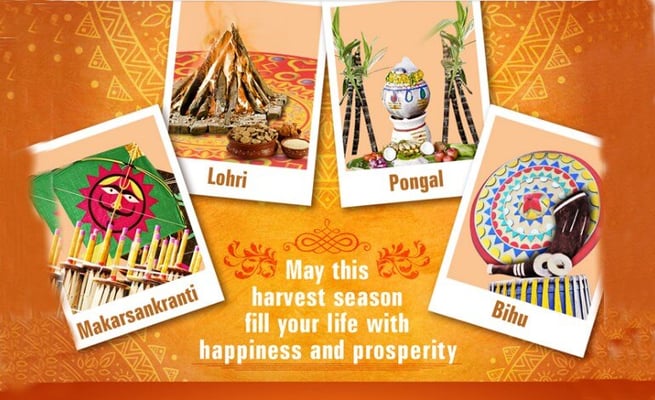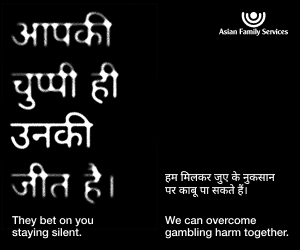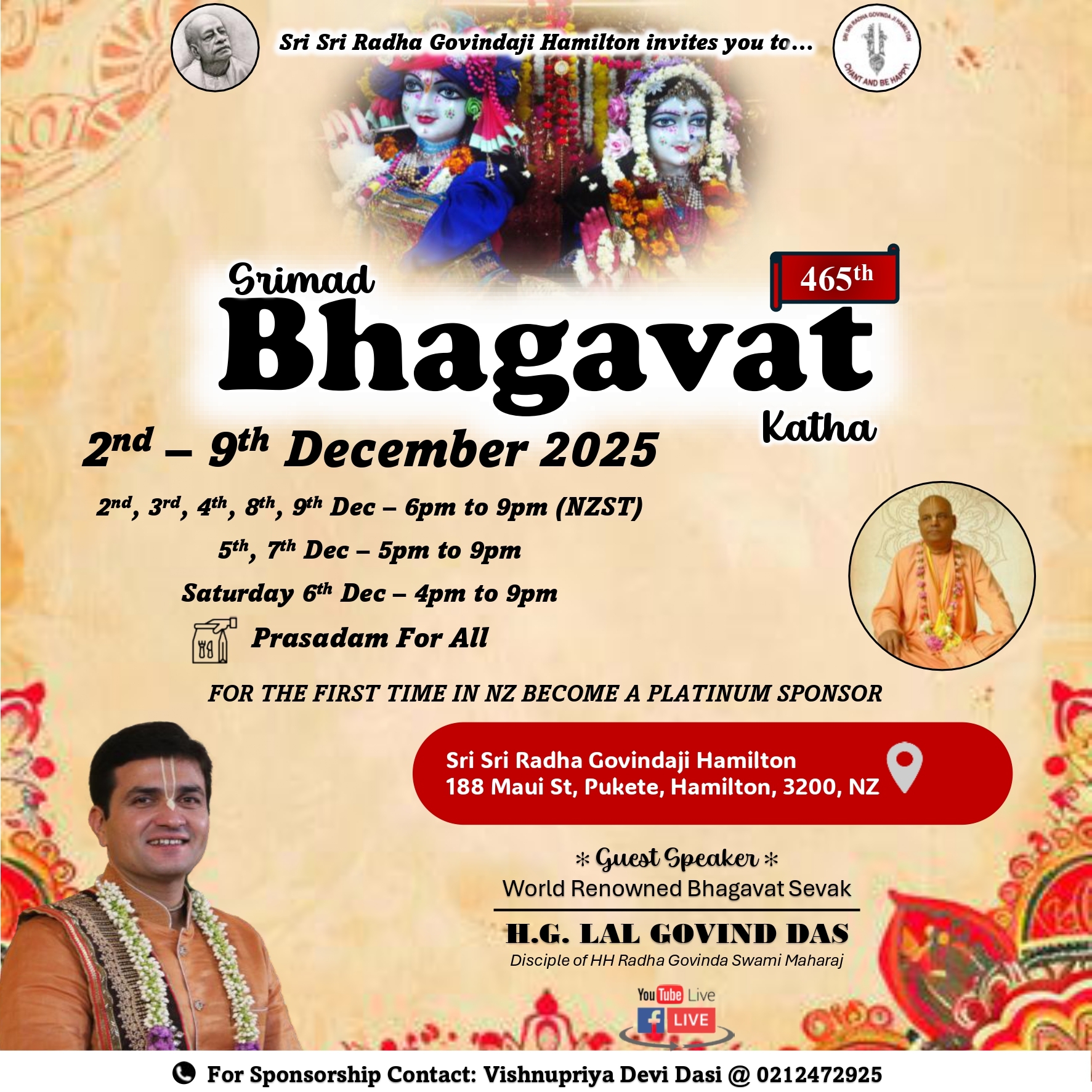Celebrating the harvest festivals of India

“Sundar Mundariye, tera kaun vichara,
Dulla Bhatti wala…lohri vai lohri de mai lohri”
If you have lived in North India, especially Punjab, songs such as this would have been quite common after the new year rolls in and people get ready for the first festival of the year in the country known as the country of festivals.
The sweet aroma of gud-til ke laddu, moongfali (peanuts), rewdi, and gachak makes you nostalgic and take you back to the good old childhood memories related to the festival. Young kids used to start visiting every house in the street weeks before the festival and sing cheerful Lohri songs, some of which we still remember, and would get Lohri treats from every household.
But if you are too lazy to go out and give them treats, they’ll still sing songs but the ones you won’t be happy to hear; songs such as hukka vai hukka, eh ghar bhukha (meaning the people of this house are moneygrubber).
And on the day of Lohri, you start getting ready and preparing for the evening. I remember collecting wood logs from nearby areas with my younger brother to create a bonfire.
Waiting for the tempting sarso ka saag (curry made of mustard leaves) and makki ki roti (corn flour bread) along with gud-chawal (jaggary rice) after the puja was a tough task in itself.
All these memories make me nostalgic of one of my favourite festivals of Punjab, and I am sure many who have grown up in North India would feel the same.
But now here we are, thousands of miles away from our birth land. You wouldn’t find kids knocking on your door, singing songs and asking for treats. But the good news is that recently some of the temples and cultural associations have started celebrating this festival to re-live the memories of Lohri.
If you are looking for a place to celebrate Lohri in a traditional way, head to Bhartiya Mandir on Balmoral Road on Friday, January 13 from 7 to 8 p.m. The celebration will be followed by mahaprasadam.
History
Lohri has many stories of its origin. However, it is mainly believed to be a cultural celebration after the winter solstice—the longest night of the year. It is believed that daylight starts increasing after Lohri. Other popular associations to the festival are—harvesting of rabi crop in Punjab region, beginning of the financial new year for Punjabi farmers, and more popularly, the tale of Dulla Bhatti.
Dulla Bhatti, also referred as the Robin Hood of Punjab, was a rebel who robbed rich to help poor people and rescued girls who were enslaved in the Mughal empire. He arranged their marriages and provided a dowry for them. He is regarded as a hero in the state. The most popular Lohri song has his reference and many believe that the festival is dedicated to him.
On the day of Lohri, people in Punjab light a bonfire in front of their house and sing songs. Family and friends get together, sing prayers, and encircle the bonfire while offering peanuts, rewdi, and sesame seeds to the fire.
Lohri coincides with other festivals that are celebrated in different parts of India such as Pongal, Bihu, Makar Sankranti, and Bhogi.
Pongal or Thai Pongal is a Tamil harvest festival and is one of the most important festivals celebrated by Tamilians. It is mainly celebrated to convey the appreciation to the sun god for providing energy for agriculture. The first rise of season is boiled and consecrated to the sun as a part of the celebration, called Surya Maangalyam. The four-day festival usually starts on January 14 and marks the start of sun’s northwards journey known as Uttaraayanam. The festival is believed to be originated more than 2000 years ago. Pongal dish—a sweet dish made from rice, milk, jaggery, cardamom, raising, split green gram and cashew nuts—is an important part of the festival and is cooked in sunlight, the dish being dedicated to the sun god.
Bihu or Magh Bihu is also a harvest festival celebrated in Assam and marks the end of the harvesting season in the Hindu month of Maagha. The week-long celebration starts on the day of Makar Sankranti and includes feasts and bonfires. People build huts (called meji) from bamboo, leaves, and thatch. Meals prepared for the feast are eaten inside the hut, which is burnt down the next morning. Traditional Assamese games such as buffalo fighting and pot-breaking (tekeli bhonga) are the highlight of the festival. During the festival, Assamese people make cakes of rice and sesame seeds, and coconut sweets.
Makar Sankranti or Maaghi is the day when the sun starts to travel towards North marking the decline of winter (in Northern Hemisphere), and the days become longer. It also marks the arrival of Spring in India and is celebrated with kite flying in many parts of the country. This is a solar event and hence is one of the few festivals on Hindu calendar that fall on the same date every year, i.e. January 14. This festival is celebrated in the entire Indian region but with different names in different states. Guru Amar Das, third guru of Sikhs, had chosen Maaghi to be one of the three festivals to be celebrated by Sikhs apart from Vaisakhi and Diwali.
Bhogi is celebrated in Andhra Pradesh and is a festival where discard old things and replace them with new things. They light a bonfire at dawn with logs of wood, old wooden furniture that is no longer useful, and solid fuels. This is called ‘Rudra Gita Jnana Yagna’, implying that the all old habits, vices, attachment to relations and material things are disposed of in the sacrificial fire of knowledge of Rudra or the roaring god of hunt and storm. Bhogi is celebrated the day preceding Lohri, Thai Pongal and Makar Sankranti.
“Sundar Mundariye, tera kaun vichara,
Dulla Bhatti wala…lohri vai lohri de mai lohri”
If you have lived in North India, especially Punjab, songs such as this would have been quite common after the new year rolls in and people get ready for the first festival of the year in the country known as the...
“Sundar Mundariye, tera kaun vichara,
Dulla Bhatti wala…lohri vai lohri de mai lohri”
If you have lived in North India, especially Punjab, songs such as this would have been quite common after the new year rolls in and people get ready for the first festival of the year in the country known as the country of festivals.
The sweet aroma of gud-til ke laddu, moongfali (peanuts), rewdi, and gachak makes you nostalgic and take you back to the good old childhood memories related to the festival. Young kids used to start visiting every house in the street weeks before the festival and sing cheerful Lohri songs, some of which we still remember, and would get Lohri treats from every household.
But if you are too lazy to go out and give them treats, they’ll still sing songs but the ones you won’t be happy to hear; songs such as hukka vai hukka, eh ghar bhukha (meaning the people of this house are moneygrubber).
And on the day of Lohri, you start getting ready and preparing for the evening. I remember collecting wood logs from nearby areas with my younger brother to create a bonfire.
Waiting for the tempting sarso ka saag (curry made of mustard leaves) and makki ki roti (corn flour bread) along with gud-chawal (jaggary rice) after the puja was a tough task in itself.
All these memories make me nostalgic of one of my favourite festivals of Punjab, and I am sure many who have grown up in North India would feel the same.
But now here we are, thousands of miles away from our birth land. You wouldn’t find kids knocking on your door, singing songs and asking for treats. But the good news is that recently some of the temples and cultural associations have started celebrating this festival to re-live the memories of Lohri.
If you are looking for a place to celebrate Lohri in a traditional way, head to Bhartiya Mandir on Balmoral Road on Friday, January 13 from 7 to 8 p.m. The celebration will be followed by mahaprasadam.
History
Lohri has many stories of its origin. However, it is mainly believed to be a cultural celebration after the winter solstice—the longest night of the year. It is believed that daylight starts increasing after Lohri. Other popular associations to the festival are—harvesting of rabi crop in Punjab region, beginning of the financial new year for Punjabi farmers, and more popularly, the tale of Dulla Bhatti.
Dulla Bhatti, also referred as the Robin Hood of Punjab, was a rebel who robbed rich to help poor people and rescued girls who were enslaved in the Mughal empire. He arranged their marriages and provided a dowry for them. He is regarded as a hero in the state. The most popular Lohri song has his reference and many believe that the festival is dedicated to him.
On the day of Lohri, people in Punjab light a bonfire in front of their house and sing songs. Family and friends get together, sing prayers, and encircle the bonfire while offering peanuts, rewdi, and sesame seeds to the fire.
Lohri coincides with other festivals that are celebrated in different parts of India such as Pongal, Bihu, Makar Sankranti, and Bhogi.
Pongal or Thai Pongal is a Tamil harvest festival and is one of the most important festivals celebrated by Tamilians. It is mainly celebrated to convey the appreciation to the sun god for providing energy for agriculture. The first rise of season is boiled and consecrated to the sun as a part of the celebration, called Surya Maangalyam. The four-day festival usually starts on January 14 and marks the start of sun’s northwards journey known as Uttaraayanam. The festival is believed to be originated more than 2000 years ago. Pongal dish—a sweet dish made from rice, milk, jaggery, cardamom, raising, split green gram and cashew nuts—is an important part of the festival and is cooked in sunlight, the dish being dedicated to the sun god.
Bihu or Magh Bihu is also a harvest festival celebrated in Assam and marks the end of the harvesting season in the Hindu month of Maagha. The week-long celebration starts on the day of Makar Sankranti and includes feasts and bonfires. People build huts (called meji) from bamboo, leaves, and thatch. Meals prepared for the feast are eaten inside the hut, which is burnt down the next morning. Traditional Assamese games such as buffalo fighting and pot-breaking (tekeli bhonga) are the highlight of the festival. During the festival, Assamese people make cakes of rice and sesame seeds, and coconut sweets.
Makar Sankranti or Maaghi is the day when the sun starts to travel towards North marking the decline of winter (in Northern Hemisphere), and the days become longer. It also marks the arrival of Spring in India and is celebrated with kite flying in many parts of the country. This is a solar event and hence is one of the few festivals on Hindu calendar that fall on the same date every year, i.e. January 14. This festival is celebrated in the entire Indian region but with different names in different states. Guru Amar Das, third guru of Sikhs, had chosen Maaghi to be one of the three festivals to be celebrated by Sikhs apart from Vaisakhi and Diwali.
Bhogi is celebrated in Andhra Pradesh and is a festival where discard old things and replace them with new things. They light a bonfire at dawn with logs of wood, old wooden furniture that is no longer useful, and solid fuels. This is called ‘Rudra Gita Jnana Yagna’, implying that the all old habits, vices, attachment to relations and material things are disposed of in the sacrificial fire of knowledge of Rudra or the roaring god of hunt and storm. Bhogi is celebrated the day preceding Lohri, Thai Pongal and Makar Sankranti.









Leave a Comment